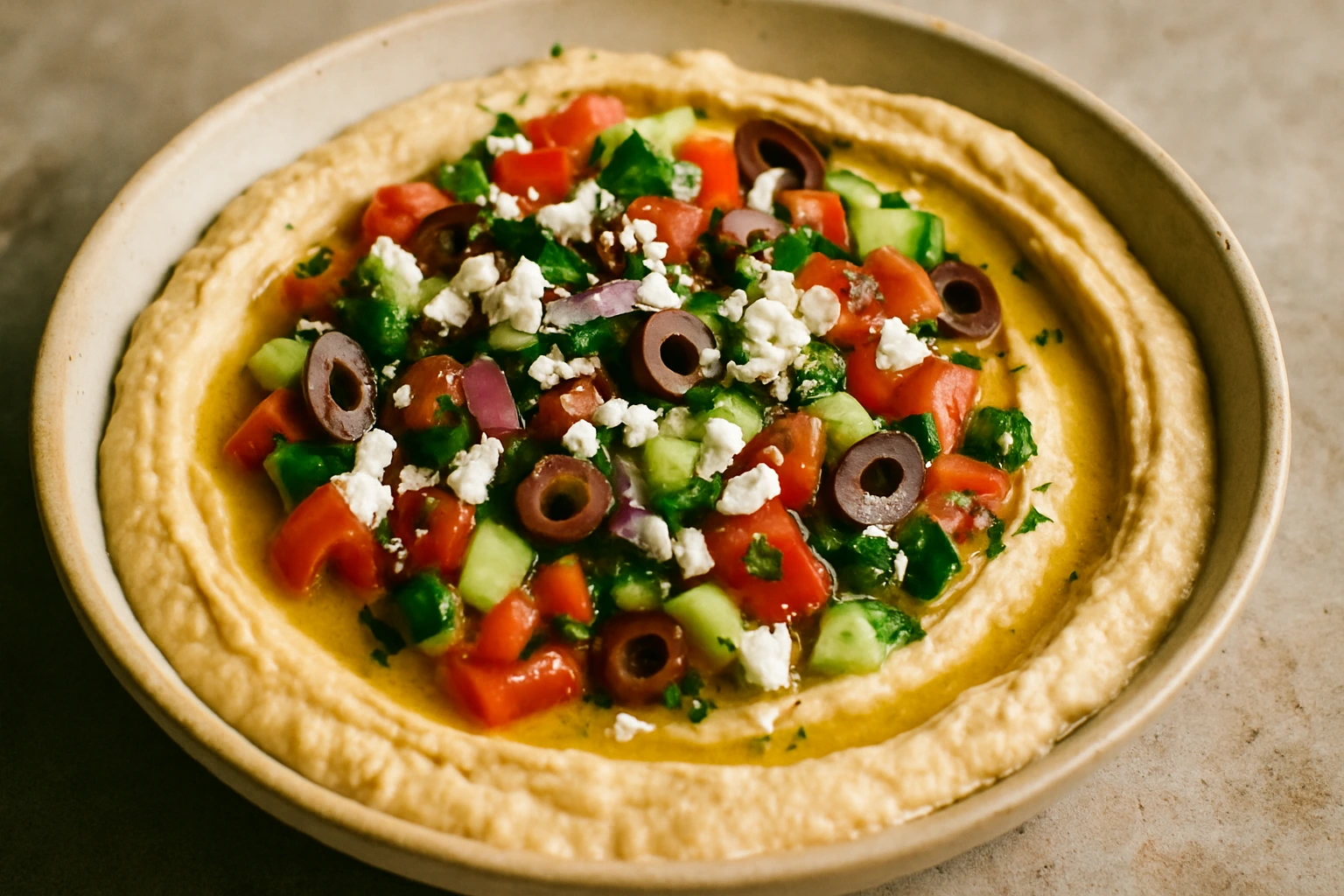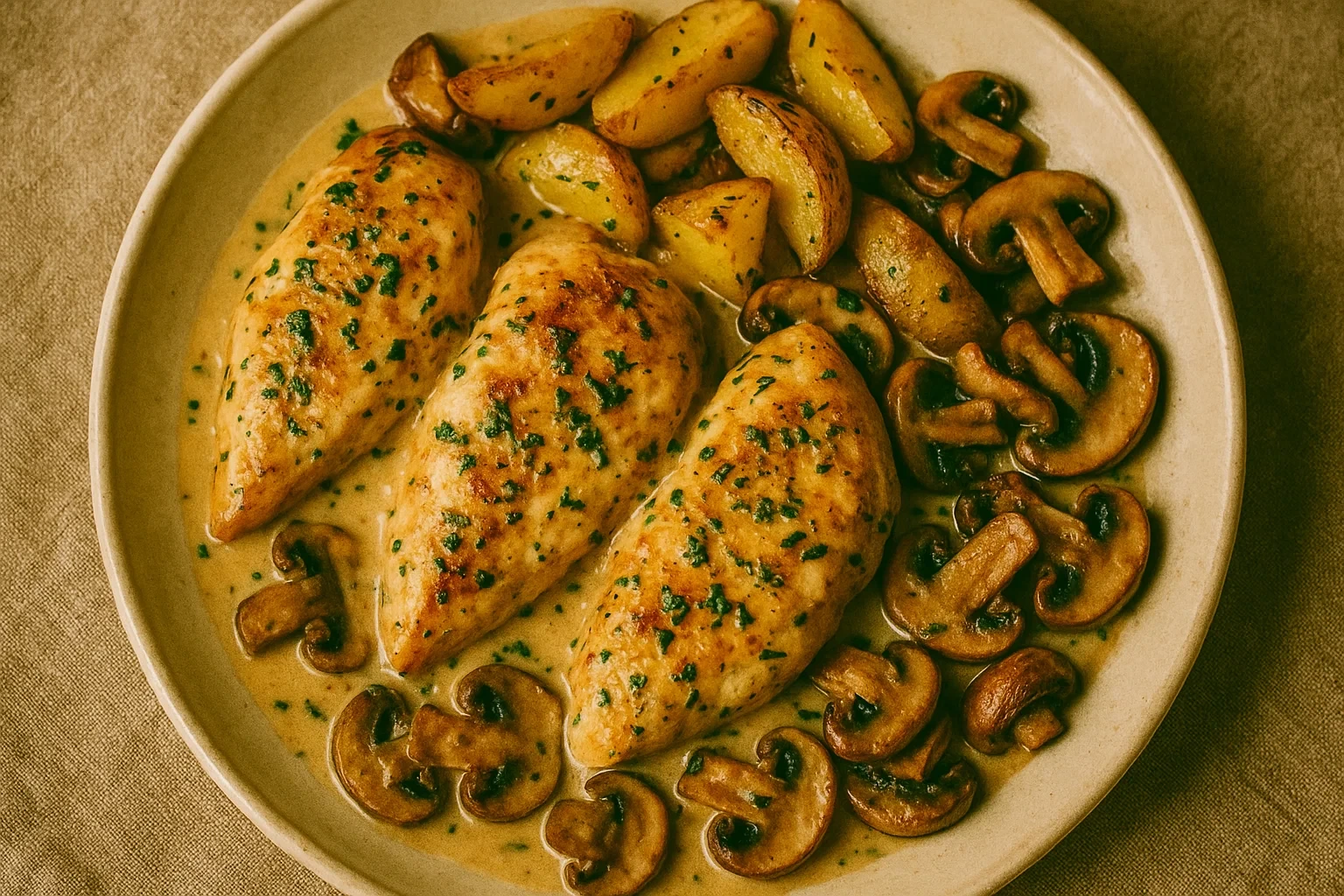Have you ever craved a savory, creamy, and filling dip that will make everyone at the table reach for more? Loaded Hummus Recipe could be your answer! This delightful Mediterranean treat combines the traditional richness of hummus with a variety of vibrant toppings that take it to the next level. Whether you’re hosting a gathering or enjoying a snack, this dish brings an irresistible burst of flavor that’s sure to leave a lasting impression.
In this post, we’ll walk you through every step to prepare Greek-Style Loaded Hummus, offering tips, tricks, and suggestions to personalize it according to your taste and dietary preferences.
Ingredients List
For our loaded hummus recipe, you’ll need the following ingredients, which can be found in most grocery stores or local markets. You can also make substitutions to suit your tastes or dietary needs.
Basic Ingredients:
- 1 can (15 oz) chickpeas – The main base for your hummus, providing fiber and protein.
- 1/4 cup tahini – Adds a creamy, nutty flavor that enhances the texture.
- 1/4 cup fresh lemon juice – Brightens the dish with its tangy, zesty flavor.
- 2 tablespoons olive oil – Adds richness and smoothness.
- 2 cloves garlic – A staple in hummus, offering a savory base note.
- Salt and pepper – For basic seasoning, to taste.
Toppings (Greek-Style):
- 1/2 cup diced cucumber – Fresh and crunchy for a refreshing contrast.
- 1/4 cup Kalamata olives – A briny, salty accent that brings Mediterranean flavor.
- 1/4 cup feta cheese – Creamy and tangy, it complements the hummus perfectly.
- 1 tablespoon olive oil – For drizzling and a rich finish.
- 1 tablespoon fresh parsley – Adds a fresh, herby note that brightens the dish.
- Pinch of paprika or sumac – Optional, for an extra touch of heat or tanginess.
Substitutions:
- Chickpeas: Use cooked or roasted cauliflower for a low-carb alternative.
- Tahini: Swap for sunflower seed butter if you’re allergic to sesame.
- Olives: Try marinated artichoke hearts for a different Mediterranean twist.
- Feta cheese: Vegan feta or nutritional yeast can be used as dairy-free alternatives.
Timing
Preparing your loaded hummus recipe doesn’t take long at all. Here’s the breakdown:
- Preparation Time: 10 minutes
- Cooking Time: 0 minutes (this recipe requires no cooking!)
- Total Time: 10 minutes
Compared to other appetizer recipes, this takes only a fraction of the time, making it perfect for a quick snack or last-minute gathering. If you’re looking for a hassle-free, yet delicious, dish, this is it!
Step-by-Step Instructions
Step 1: Prepare the Hummus Base
Begin by rinsing and draining the chickpeas to remove any canning liquid. For a smoother hummus, you can peel the chickpeas, but this step is optional.
- In a food processor, combine the chickpeas, tahini, lemon juice, garlic, olive oil, salt, and pepper.
- Process until smooth and creamy. If the mixture seems too thick, add a tablespoon of water at a time until you reach the desired consistency.
Pro Tip: Scrape down the sides of the food processor bowl halfway through to ensure everything is blended evenly.
Step 2: Plate the Hummus
Once your hummus is smooth and creamy, spread it out evenly on a serving platter or in a shallow bowl. Use the back of a spoon to create gentle swirls in the surface, adding texture for a more appealing presentation.
Step 3: Add the Greek Toppings
Now comes the fun part—loading your hummus! Start by adding the toppings:
- Sprinkle the diced cucumber evenly across the hummus.
- Add the Kalamata olives and crumbled feta cheese on top.
- Drizzle the olive oil generously over the entire dish.
- Garnish with fresh parsley and a pinch of paprika or sumac for an extra pop of color and flavor.
Pro Tip: For a more flavorful experience, marinate your olives and feta in a bit of olive oil and herbs before using them as toppings.
Step 4: Serve and Enjoy!
Your Greek-Style loaded hummus is now ready to serve! Pair it with pita bread, crackers, or fresh vegetables like carrot sticks, cucumber slices, and bell pepper strips for dipping.
Nutritional Information
Here’s a quick look at the nutritional breakdown for a standard serving of Greek-style loaded hummus (approximately 1/4 cup):
- Calories: 250
- Fat: 20g (mostly healthy fats from olive oil and tahini)
- Protein: 6g (thanks to the chickpeas)
- Carbohydrates: 16g (including fiber for digestive health)
- Fiber: 4g
- Sodium: 300mg (can be adjusted by using less salt or rinsing the chickpeas)
By incorporating fresh ingredients like cucumber and parsley, this recipe is not only delicious but also packed with nutrients that promote overall health.
Healthier Alternatives for the Recipe
While Greek-style loaded hummus is already a nutritious choice, there are a few ways to make it even healthier:
- Use Greek yogurt instead of tahini: This will lower the fat content while adding extra protein and creaminess.
- Add more veggies: Toss in extra vegetables like tomatoes, bell peppers, or carrots to increase the dish’s fiber content and add more vitamins.
- Swap out feta: Use a low-fat feta cheese or vegan cheese alternative to cut down on calories and saturated fat.
Serving Suggestions
This loaded hummus recipe is incredibly versatile and can be served in a variety of ways. Here are a few creative ideas:
- As a Party Platter: Serve alongside a spread of Mediterranean appetizers like stuffed grape leaves, baba ghanoush, and tabbouleh.
- As a Salad Topping: Top a simple green salad with a generous scoop of loaded hummus for added flavor and texture.
- On Toast: Spread it on toasted bread or crackers for a quick and satisfying snack.
Common Mistakes to Avoid
Creating the perfect loaded hummus recipe is simple, but there are a few common pitfalls to avoid:
- Not Draining the Chickpeas Properly: Excess liquid can make your hummus too runny. Always drain and rinse your chickpeas well.
- Using Dry Hummus: If your hummus turns out too thick, don’t hesitate to add a little water or olive oil to achieve the perfect consistency.
- Overloading with Garlic: While garlic is essential for flavor, too much can overpower the other ingredients. Stick to the recipe’s recommended amount for balance.
Storing Tips for the Recipe
To store any leftovers of your Greek-style loaded hummus:
- Place the hummus in an airtight container and store it in the refrigerator for up to 3 days.
- The toppings will soften over time, so consider storing the hummus and toppings separately if you plan to keep leftovers.
- For longer storage, freeze the hummus (without toppings) in a sealed container for up to 3 months. Thaw it overnight in the fridge before serving.
For more delicious cooking ideas and recipes, be sure to explore the full collection on our website!
Conclusion
Greek-Style Loaded Hummus is a flavorful, healthy, and easy-to-make dish that combines creamy hummus with vibrant Mediterranean toppings. Whether you’re serving it as a snack or as part of a larger meal, this recipe is sure to impress. We invite you to give it a try—share your feedback in the comments below or leave a review. Don’t forget to subscribe for more delicious recipes and cooking tips!
FAQs
1. Can I make this recipe vegan?
Yes, simply omit the feta cheese or use a plant-based alternative to make this recipe vegan-friendly.
2. Can I add other toppings?
Absolutely! You can customize the toppings to your liking. Try roasted red peppers, pine nuts, or even sun-dried tomatoes for a different flavor profile.
3. How do I make the hummus smoother?
If your hummus is too chunky, add a little more olive oil or water during the blending process to achieve a smoother texture.
4. Can I make this recipe ahead of time?
Yes, you can prepare the hummus base ahead of time and refrigerate it. Just add the toppings before serving for the freshest taste.






